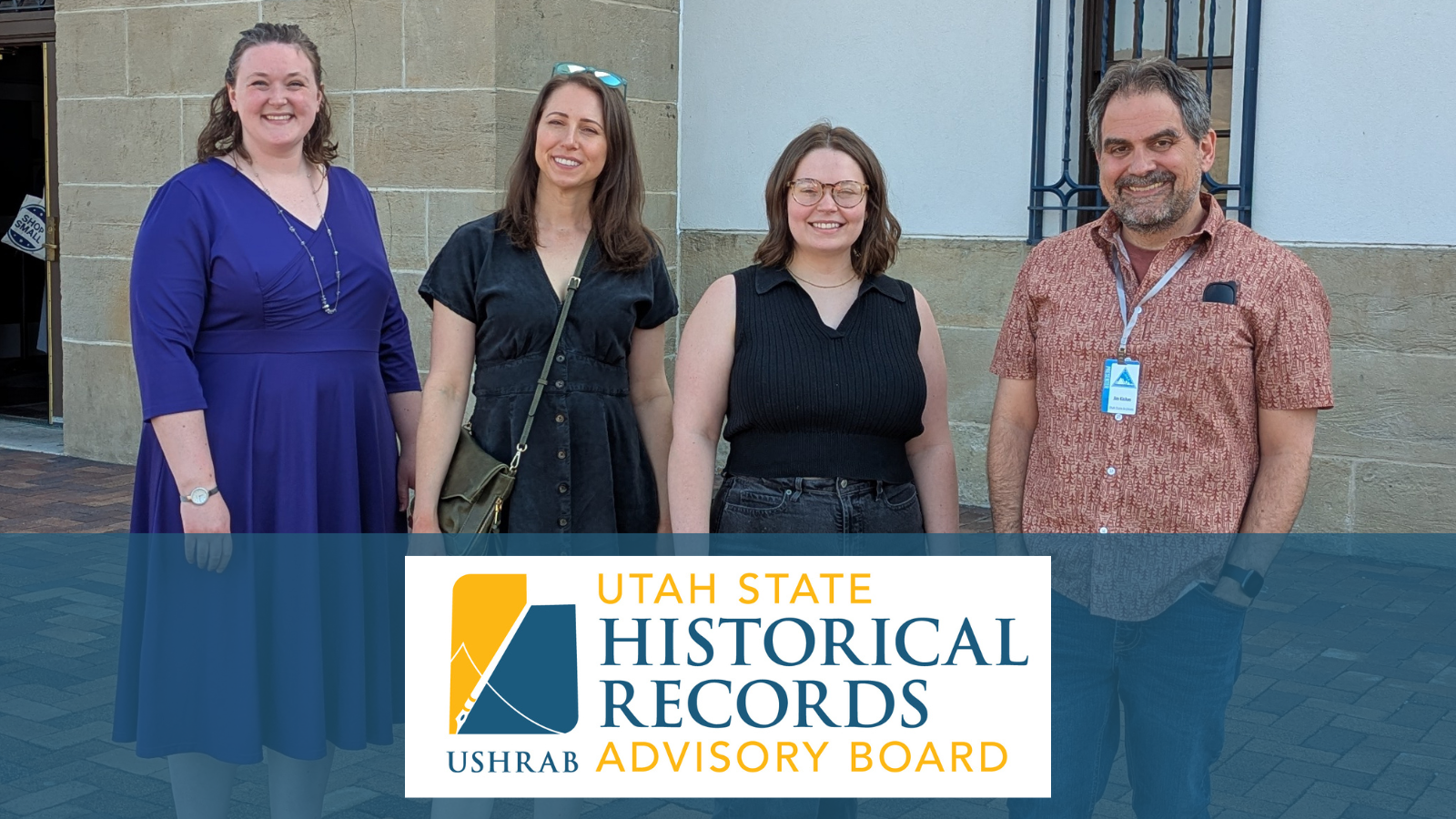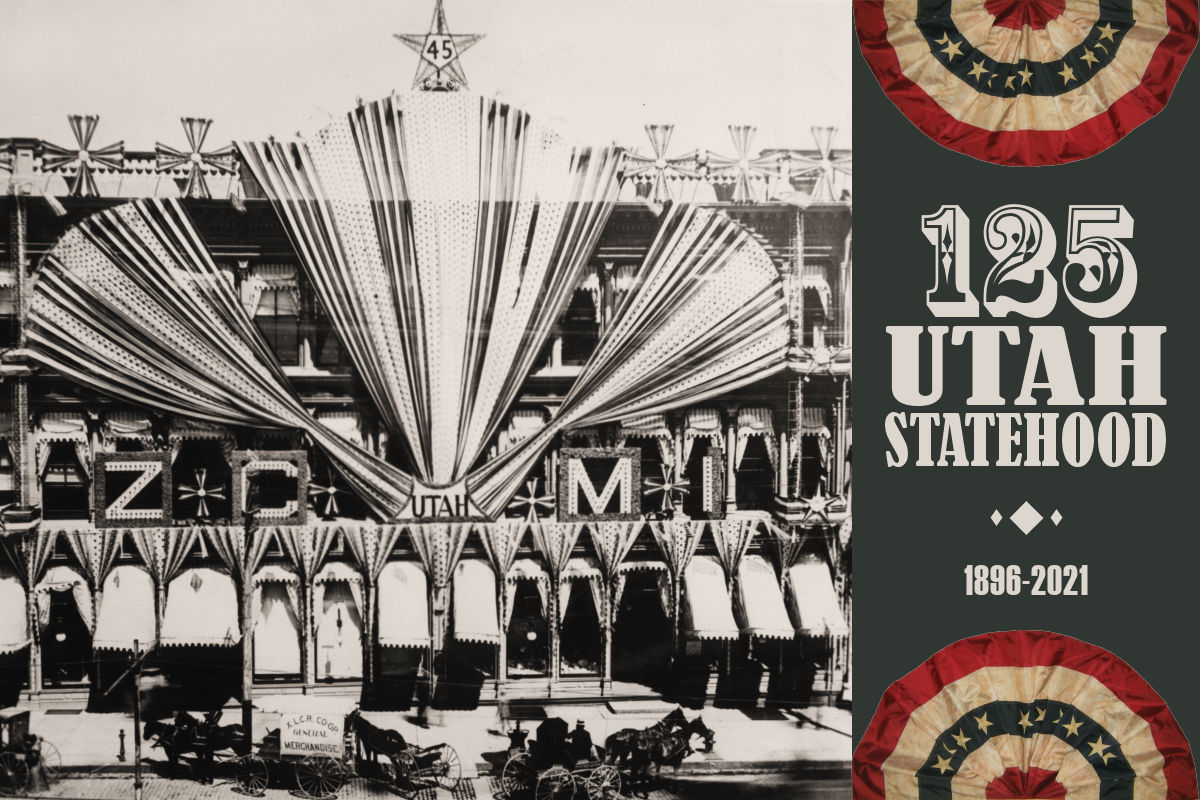
Utah’s Road to Statehood: The Earliest Utah Settlers
Indigenous Americans
The earliest settlers in modern Utah were, of course, the Indigenous Americans. The Ancestral Puebloans lived in the vicinity of Utah from 500-1300 AD. They were commonly known as ‘Anasazi,’ an exonym coined by the Navajos, and not preferred by the Puebloans, which means ancient enemies. The Puebloans occupied the southeastern portion of Utah, as well as portions of modern day Arizona, New Mexico, and Colorado. They are best known for their basket making and their cliff dwellings.
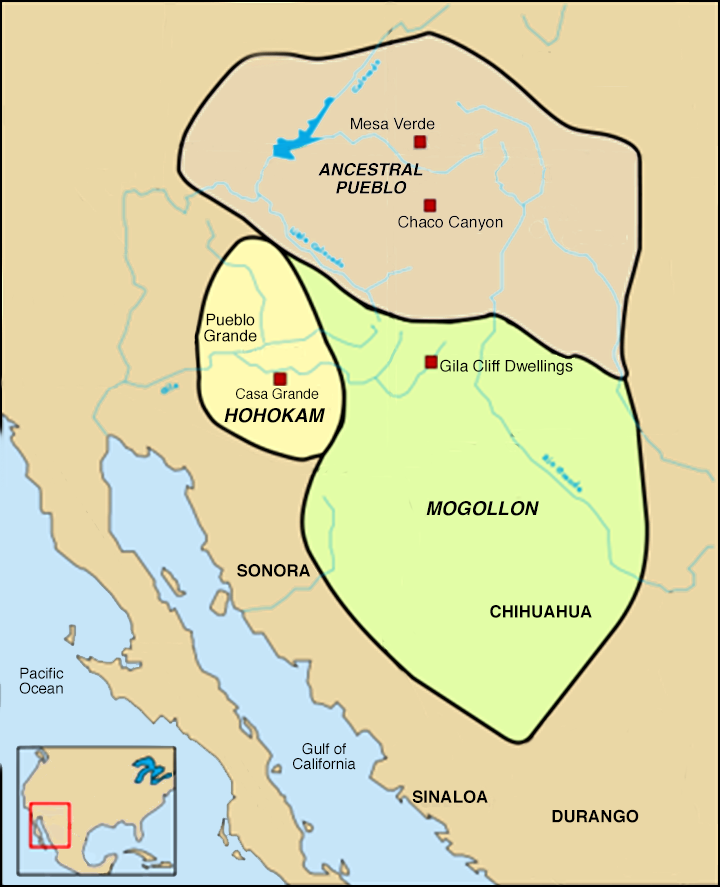
Yuchitown, CC BY-SA 4.0, via Wikimedia Commons
By the time Europeans came to Utah, the Puebloans had disappeared from the area. The Navajo, Utes, Paiutes, and Shoshone peoples had taken up residence across modern-day Utah. All four of these tribes knew of each other and traded with members of other tribes. The Shoshone lived in northern Utah, occupying Cache Valley and parts of present day Idaho and Wyoming. The Utes lived in the Great Basin. They had several smaller tribes that met together each year for trading. Once Europeans arrived, the Utes traded for horses, which changed their lifestyle dramatically, allowing more mobility and more efficient hunting practices. The Navajo and the Paiutes lived in Southern Utah. The Navajo were initially a hunter-gatherer society, but drifted more towards farming practices near the 17th century. The Paiutes were a smaller tribe and suffered slave raids from both the Utes.
European Explorers
The first known European to enter Utah was Juan Antonio de Rivera, a resident of New Spain, which comprised most of North America. The governor sent him to explore the area north of Santa Fe in an attempt to find silver. Rivera entered the southwestern area of Utah in 1765, discovered the Colorado River, and claimed the whole area for Spain. The Colorado River continues to be a key resource in the region.
Fur trappers ventured into Utah about 80 years later to capitalize on the beaver population in order to supply the hat style that was in high demand. One of these was Jim Bridger, who was the first settler to report seeing the Great Salt Lake in 1824. In 1843, he established Fort Bridger in the Wyoming Territory as a station for those following the Oregon Trail. After the Latter-Day Saints arrived in Utah and took over the fort, Bridger went into government service as a scout. He had extensive knowledge of the land and the Indigenous Americans.
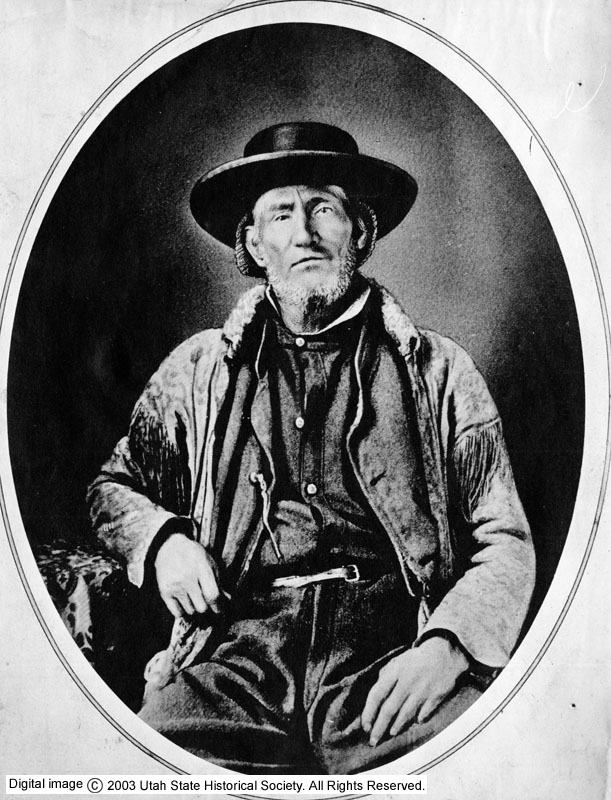
Photo used courtesy of the Utah State Historical Society
Jedediah Smith is credited with finding a pass through the Rocky Mountains. He started fur trapping in 1822 for William Ashley, co-founder of the Rocky Mountain Fur Company. Together they were trying to decrease their dependence on Indigenous Americans guiding them through the land, and Smith was one of Ashley’s best explorers. Smith heard from an Indigenous American tribe about an easy pass through the Rocky Mountains. It was a gradually ascending plain that was known as the “South Pass.” This pass had actually been used by previous fur traders, but that wasn’t widely known and Smith claimed the credit for the discovery. The South Pass became the main route for the Oregon trail, allowing wagons to bypass the Rocky Mountains without trouble. Smith went on to explore the Great Salt Lake and the Colorado Plateau and died at the age of 32.
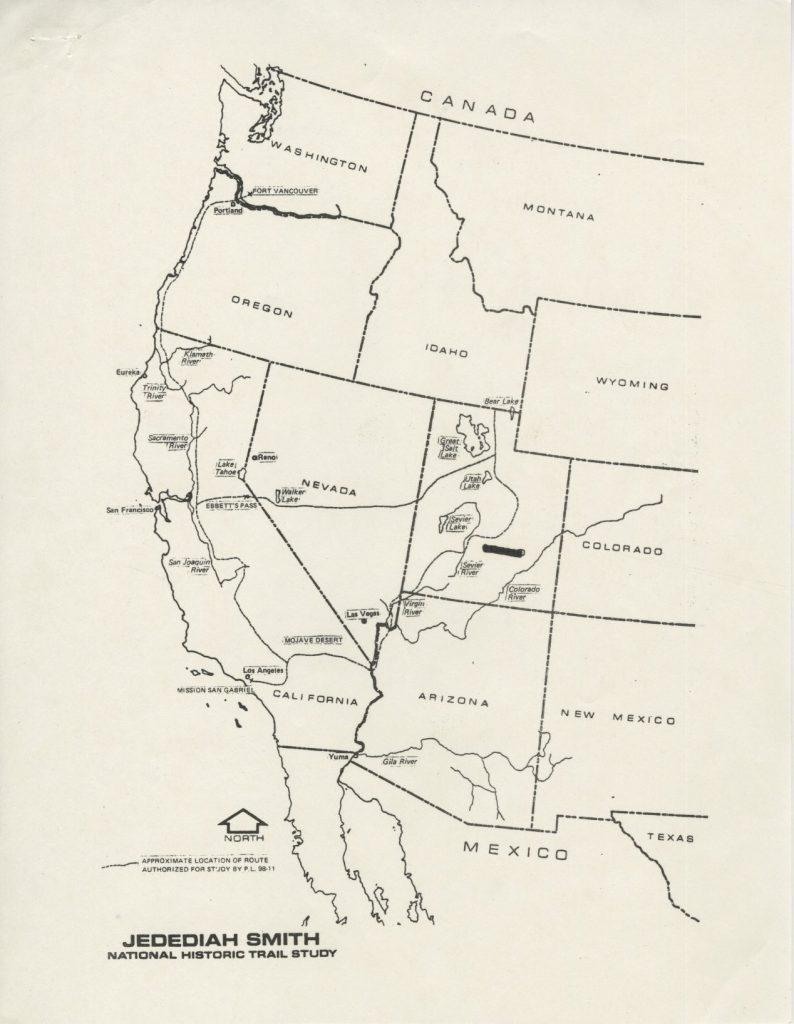
Series 3912. Department of Heritage and Arts. Division of State History Administration files
John C. Fremont is the man who mapped out Utah in great detail. He was employed by the Army as a topographical engineer and mapped out the Mississippi and Missouri rivers in 1838. He later expanded and mapped a swath of land between the Mississippi valley and the Pacific Ocean. As emigration to Oregon increased, Fremont was sent to survey the route west to the Wyoming region. After that he went into Mexican territory and crossed through to Fort Sutter in California. As it became increasingly likely that war would break out between the U.S. and Mexico over the territory of Texas, Fremont was sent ostensibly to map out the Great Basin but had military orders as well to spy on Mexican troops. His expedition fought with Mexican authorities before retreating. He did actually map out the Great Basin and his maps led the way for the later Latter-Day Saint settlers.
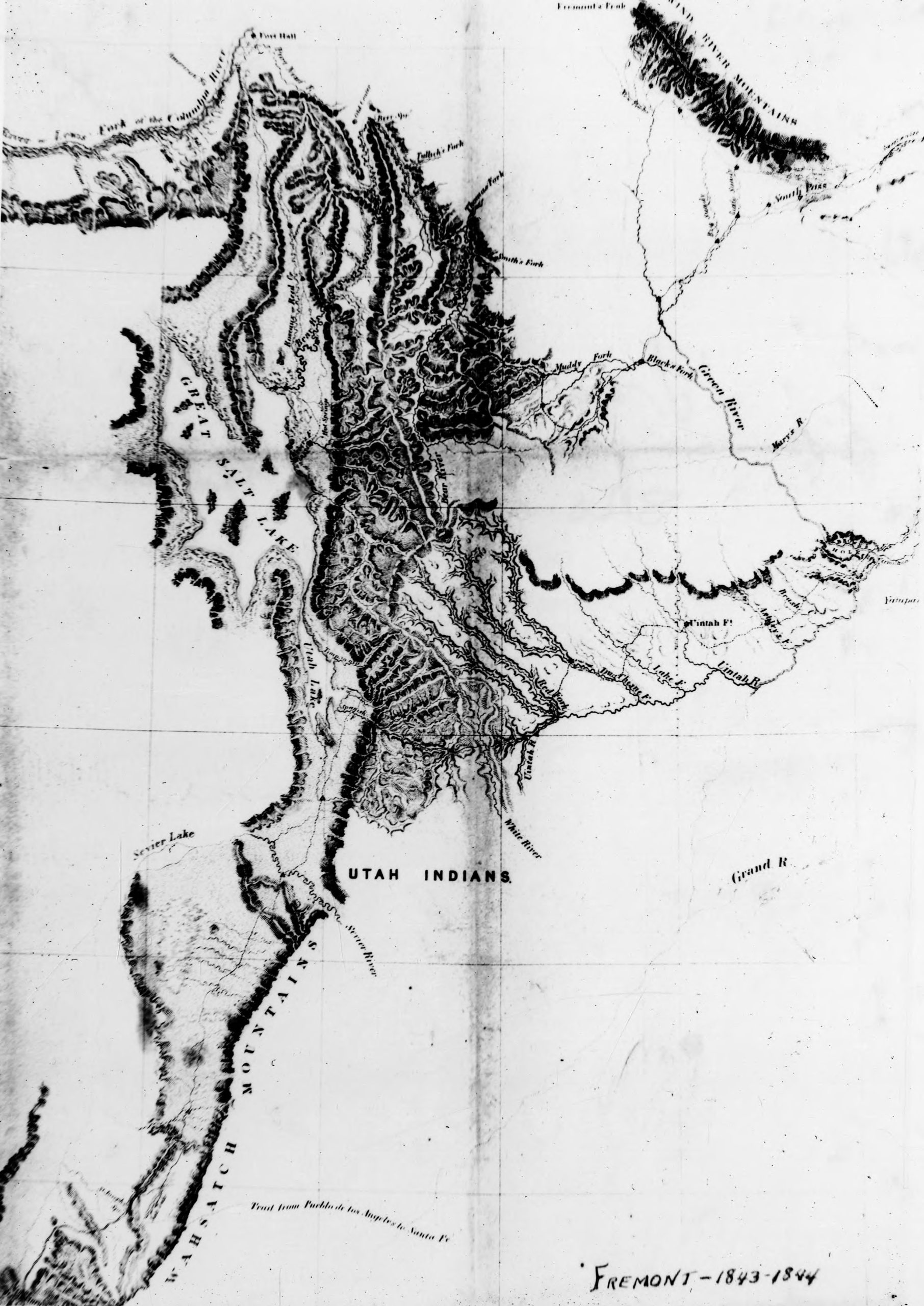
Photo used by permission, Utah State Historical Society
The next blog post will explore how the Church of Jesus Christ of Latter-Day Saints (colloquially known as Mormons) settled in Utah, and how that led to the creation of the Utah Territory.
Sources:
“Frontiersman Jedediah Smith is born.” History. A&E Television Networks. Accessed February 23, 2021. https://www.history.com/this-day-in-history/mountain-man-jedediah-smith-is-born
“Jim Bridger: American frontiersman.” Encyclopedia Britannica. Accessed January 24, 2021. https://www.britannica.com/biography/Jim-Bridger
“John C Fremont.” Encyclopedia Britannica. Accessed February 23, 2021. https://www.britannica.com/biography/John-C-Fremont
Lamar, Howard R. “Statehood for Utah: A Different Path.” Utah Historical Quarterly 39, no. 4 (Fall 1971): 5-25. https://issuu.com/utah10/docs/uhq_volume39_1971_number4
Recent Posts
Authors
Categories
- Certification/
- Digital Archives/
- Electronic Records/
- FAQ/
- Finding Aids/
- General Retention Schedules/
- GRAMA/
- GRAMA FAQs/
- Guidelines/
- History/
- Legislative Updates/
- News and Events/
- Open Government/
- Records Access/
- Records Management/
- Records Officer Hub/
- Records Officer Spotlights/
- Research/
- Research Guides/
- RIM FAQs/
- Roles and Responsibilities/
- State Records Committee/
- Training/
- Uncategorized/
- Utah State Historical Records Advisory Board/


